Europe has always been a popular tourist destination, with a rich tapestry of history, culture, and magnificent landscapes. The continent’s iconic landmarks entice visitors looking to immerse themselves in the grandeur of centuries-old architecture, natural wonders, and artistic treasures.
St. Peter’s Basilica in Vatican, Italy
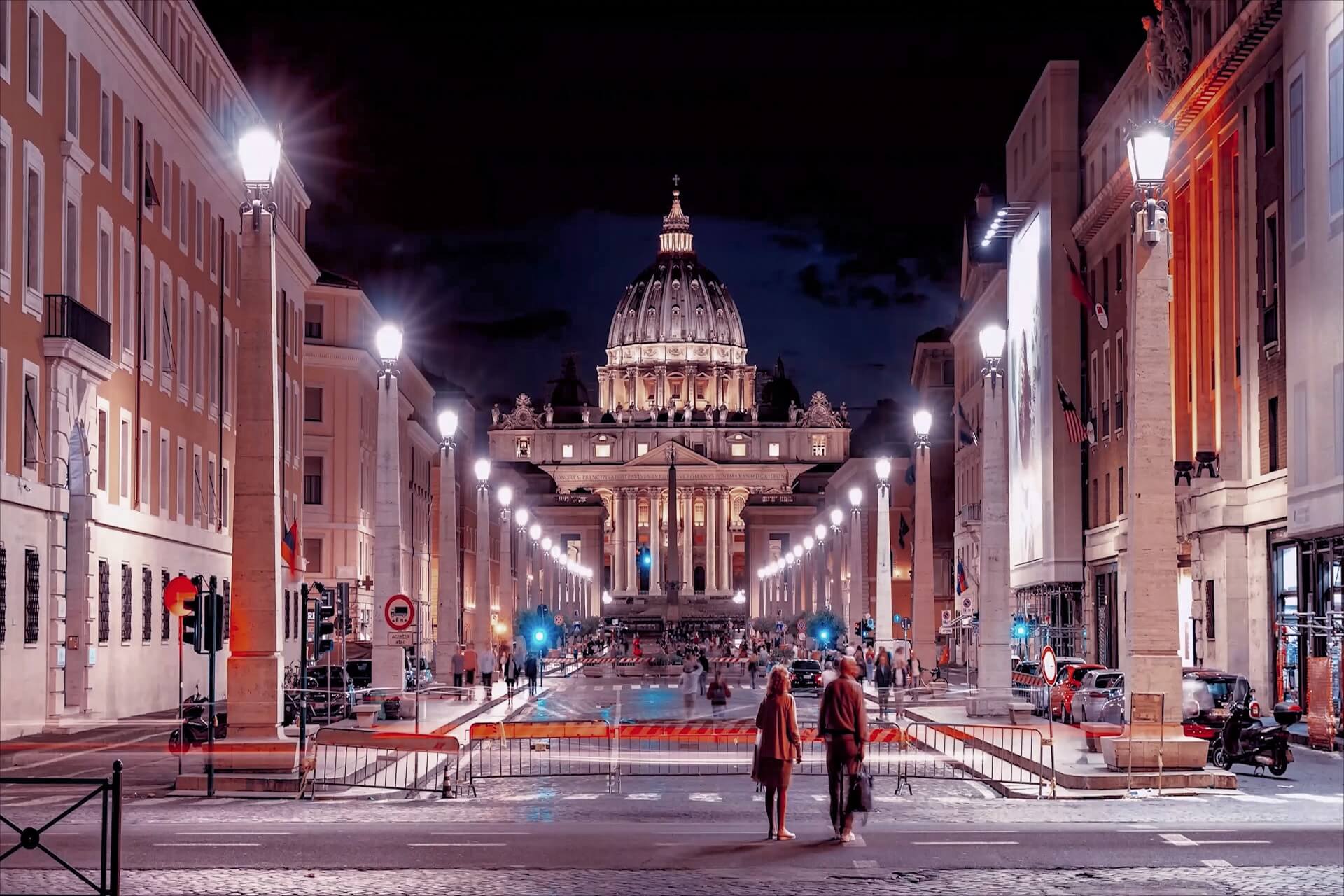
St. Peter’s Basilica in Vatican City, Italy is a magnificent structure that exemplifies human intellect, faith, and artistry. This architectural treasure, tucked within the holy embrace of Vatican City, attracts millions of visitors each year, all anxious to be immersed in its majesty and historical significance.
St. Peter’s Basilica is a Renaissance architectural marvel created and embellished by some of the best brains of the time. The project benefited from the collective genius of great architects such as Donato Bramante, Michelangelo, Gian Lorenzo Bernini, and Carlo Maderno, each of whom left an indelible mark on this majestic monument.
The basilica’s massive dome, a Michelangelo masterwork, is undoubtedly its most distinctive feature. When tourists look up at its towering presence, they can’t help but feel overwhelmed by the grandeur of its design. The magnificent exterior, embellished with elaborate sculptures and imposing columns, evokes awe and reverence.
When guests enter, they are met with a grandiosity that befits the building’s historical and theological significance. The nave extends like an infinite pathway, guiding the eye to the magnificently ornamented altar at the basilica’s core. Sunlight filters through stained glass windows, creating a hypnotic color dance on the polished marble floor.
Nobody cannot speak of St. Peter’s Basilica without mentioning Michelangelo’s Pietà, a sculptural masterwork that depicts the Virgin Mary cradling the dying corpse of Jesus. This moving depiction of anguish and maternal love is a monument to Michelangelo’s artistic prowess and will live on as a religious symbol for all time.
The basilica’s various chapels, each devoted to a different saint or historical event, provide tranquil spaces for private thought and prayer. Each location, from the Crucifixion Chapel to the Chapel of the Holy Sacrament, is a treasure mine of religious symbolism and artistic expression.
Aside from its aesthetic beauty, St. Peter’s Basilica is the final burial place of many popes, notably Pope John Paul II and Pope Innocent VIII. These papal tombs, combined with relics of enormous religious value, lend spiritual gravitas to the sacred location.
St. Peter’s Basilica in Vatican, Italy, is an architectural masterpiece as well as a tribute to humanity’s continuous devotion to faith and art. Its massive dome, awe-inspiring facades, and valuable artworks make it a must-see for travelers, history buffs, and worshippers alike.
The Great Mosque in Córdoba, Spain
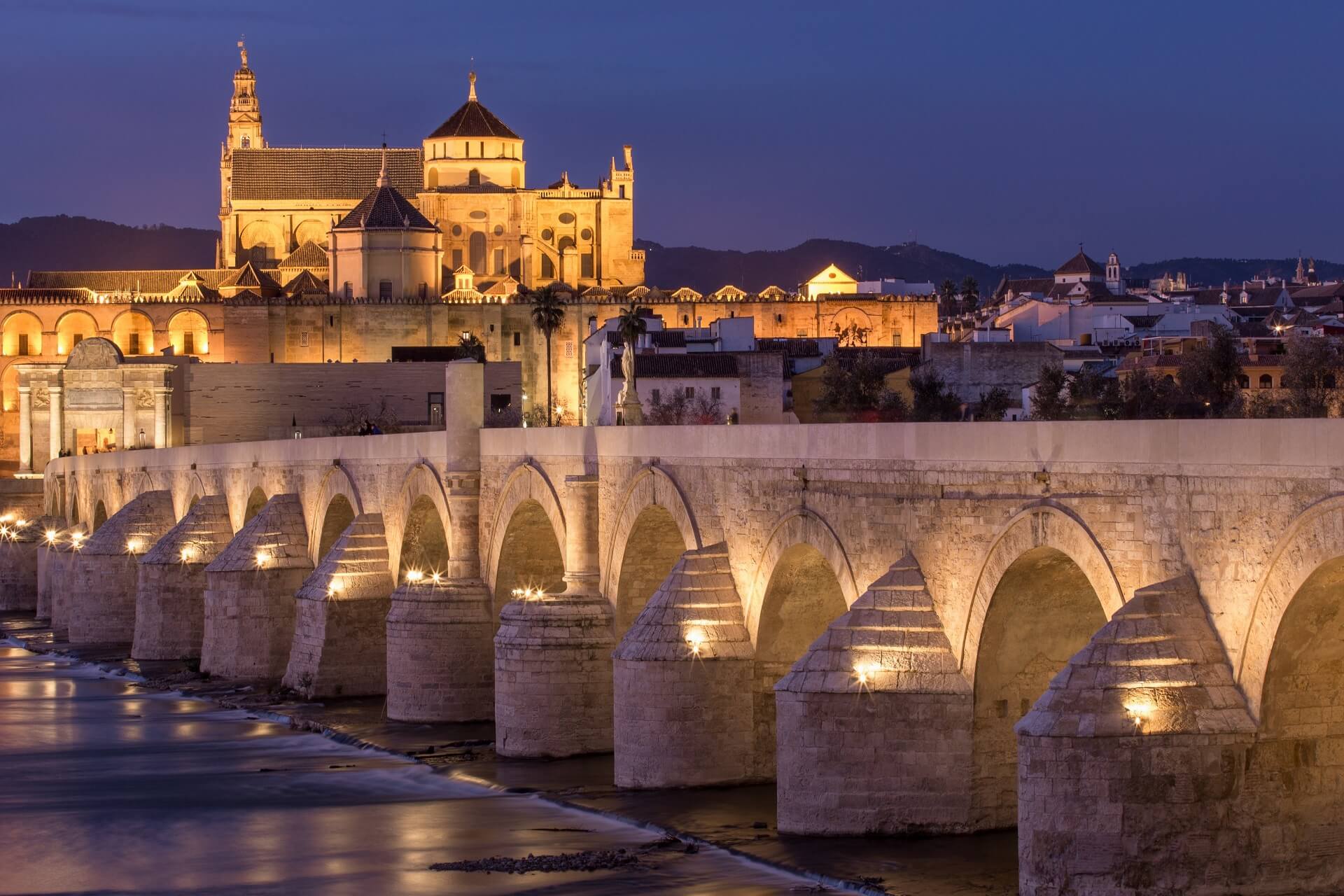
The Great Mosque, located in the center of Cordoba, Spain, is a mesmerizing example of Islamic architecture’s splendor. It is an awe-inspiring destination for history buffs and art aficionados equally due to its illustrious past and unique blend of cultural influences.
The Great Mosque in Cordoba is a magnificent example of Moorish architecture, having been constructed in the eighth century. The mosque, known as “Mezquita” in Spanish, was founded by Abd al-Rahman I, the Umayyad emir of Cordoba, on the site of a former Visigothic chapel. The mosque was expanded numerous times over the centuries, resulting in a mesmerizing amalgamation of architectural styles that harmoniously fused diverse artistic traditions.
The intricate stucco decorations on the exterior of the mosque reflect the elegance and sophistication of Islamic art. Its distinctive red-and-white striped arches create a mesmerizing visual effect that leaves visitors speechless. The quibla wall exemplifies splendor with its ornate mihrab, a niche designating the direction of Mecca, and its soaring mashrabiya window, which filters the sunlight into a play of ethereal patterns.
Upon entering, visitors are greeted by a vast expanse of horseshoe arches, evoking a sense of tranquility and harmony. The hypostyle hall features a staggering number of columns, each with its own design and history. When contemplating the complexity of the muqarnas, or stalactite-like vaulting, it is impossible not to be impressed by the craftsmanship of the artisans who created this masterpiece.
As you explore the interior, you will discover the columnar forest, which is a sight to witness. Over 850 marble, jasper, onyx, and granite columns support the exquisite double-tiered arches above, creating a breathtaking labyrinth effect. The mere size and attention to detail inspire profound awe and reverence for the architects and builders who made this vision a reality.
The Great Mosque witnessed a significant transformation when Christian King Ferdinand III conquered Cordoba in the 13th century. Instead of demolishing the mosque, he converted it into a Christian cathedral. Today, the Cathedral of Cordoba, also known as the Mosque-Cathedral, stands as a remarkable synthesis of Islamic and Christian architectural elements, symbolizing the city’s historical coexistence.
The Great Mosque in Cordoba, Spain, is an enchanting work of art that transcends time and culture. Its harmonious blend of Islamic and Christian influences, intricate architectural elements, and spiritual aura make it a symbol of Spain’s rich history and architectural brilliance. A visit to this majestic marvel is an unforgettable excursion into the enthralling past.
Church of the Resurrection of Christ in St. Petersburg, Russia
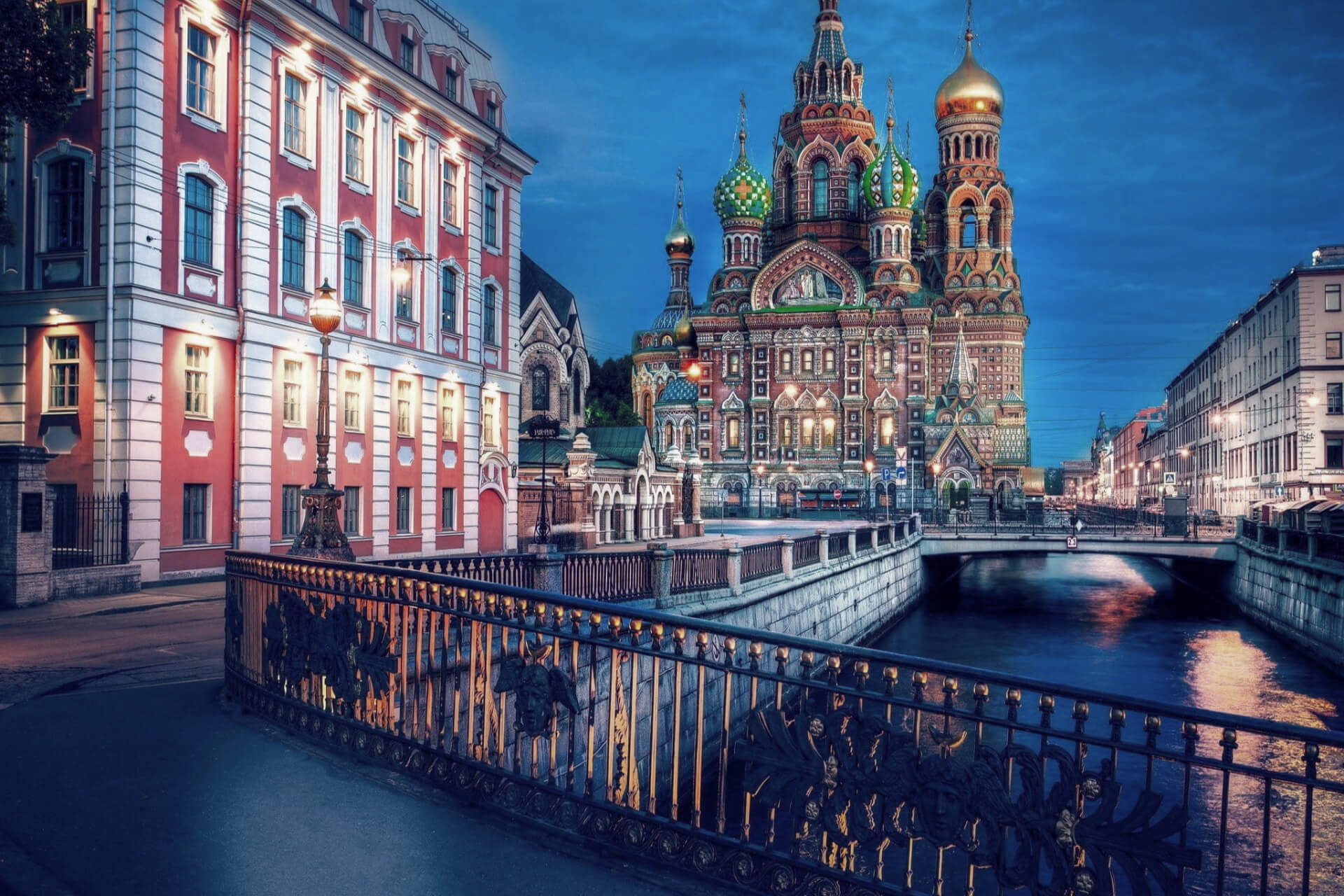
The Church of the Resurrection of Christ, nestled gracefully in the center of St. Petersburg, Russia, is an extraordinary architectural and religious landmark. This iconic structure, also known as the Church of the Savior on Spilled Blood, exemplifies Russian Revival architecture and captivates visitors with its captivating beauty and intriguing history.
The spectacular architectural design of the church is a captivating combination of various styles. It was constructed between 1883 and 1907 and combines elements of Russian medieval architecture with an abundance of Art Nouveau embellishments, resulting in a singular and ornate structure. The intricate facades, which are adorned with colorful mosaics, depict biblical stories and historical events, providing visitors with a visual feast.
This magnificent cathedral is the crown jewel of St. Petersburg, the “Venice of the North,” which is renowned for its picturesque canals and grandeur. Against the city’s skyline, its distinctive multicolored onion domes, so typical of Russian Orthodox churches, are a site to behold.
The history of the church is marked by turmoil and calamity. It was built as a memorial to Tsar Alexander II, who was the target of an assassination attempt on the site where the church now resides. The moniker “Church of the Savior on Spilled Blood” is a solemn reminder of the bloodshed that occurred on this site.
During Soviet rule, the chapel fell into disrepair and was even slated for demolition. However, it was ultimately preserved and restored with great care, demonstrating the commitment to preserving Russia’s rich cultural heritage.
Visitors are transported to a world of kaleidoscopic enchantment upon entering. The interior of the church is a breathtaking display of devotional artistry, with intricate mosaics covering over 7,500 square meters. These vibrant mosaics depict scenes from the life and crucifixion of Jesus Christ as well as various saints and deities. Each mosaic piece is meticulously assembled to create a symphony of colors and shapes that illuminates the entire room with an ethereal light.
Today, the Church of the Resurrection of Christ is a prominent cultural landmark in St. Petersburg, attracting not only devout individuals but also art and history enthusiasts. When entering this architectural masterpiece, one cannot help but be awed by the spiritual aura and mesmerizing beauty that permeate the space.
Church of the Resurrection of Christ in St. Petersburg, Russia exemplifies Russia’s diverse cultural and religious heritage. It is a must-see destination for anyone traveling to the enchanting city of St. Petersburg because of its enchanting architecture and magnificent mosaics. This architectural marvel stands aloft as both a tribute to the past and a source of inspiration for future generations.
Alhambra in Granada, Spain
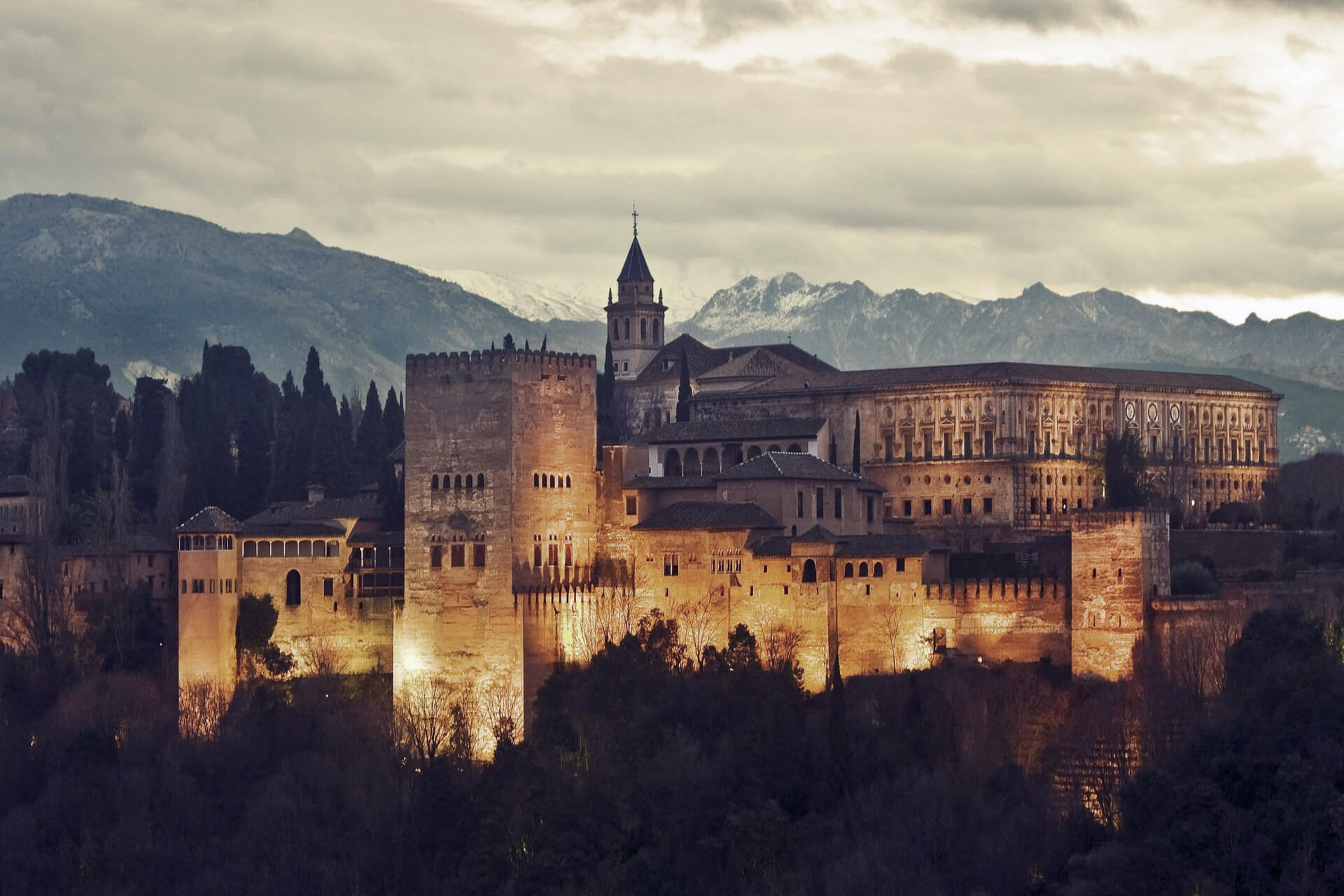
The Alhambra in Granada, Spain, embodies the essence of entrancing Moorish architecture and stunning historical significance. This magnificent fortress-palace complex situated atop the picturesque hill of Sabika is a testament to the Iberian Peninsula’s rich cultural tapestry.
Alhambra has a special allure for tourists and history buffs equally, luring them into its enchantment. The artistic vision and engineering ingenuity of the long-defunct Nasrid dynasty are embodied in every intricate detail of this architectural marvel.
As you navigate the Alhambra’s labyrinthine corridors, courtyards, and gardens, you will be transported back in time. The palace’s interior is adorned with intricately carved stucco walls, delicate arabesques, and geometric patterns, demonstrating the mastery of its builders.
The Nasrid Palaces are one of the most recognizable features of Alhambra, exhibiting an exceptional blend of Islamic and Andalusian architectural styles. The Palace of Lions is a site to behold, as its central courtyard features a magnificent marble fountain supported by twelve marble lions.
The Alcazaba, the oldest portion of the complex, rises as a sentinel overlooking Granada and the Sierra Nevada Mountains. Ancient watchtowers, such as the Torre de la Vela, allow visitors to take in the spectacular views that once served as a strategic defense against possible invaders.
As you investigate the Generalife Gardens, you are surrounded by a sense of peace. These gardens, meticulously designed with fountains, verdant vegetation, and blooming flowers, once served as a haven of tranquility for the Nasrid monarchs.
Within the Nasrid complex, the Alhambra also features the Palace of Charles V, a Renaissance jewel. Its circular courtyard and imposing columns provide a striking contrast to the intricate Moorish architecture, blending two distinct eras in a harmonious manner.
Visiting the Alhambra is comparable to entering a poetic period of history. Each stone tells a tale, and each intricate carving hints at a bygone era. No surprise it has captivated the imaginations of so many poets, writers, and artists over the centuries.
The Alhambra in Granada, Spain invites you on a voyage of cultural exploration. Its captivating grandeur leaves an indelible impression on those who are fortunate enough to experience it. Alhambra should be on your list of must-visit destinations if you yearn for an extraordinary journey through time and architecture. It is a place where dreams and reality collide, and where history is brought to life in a truly remarkable fashion.
Duomo di Milano in Milan, Italy
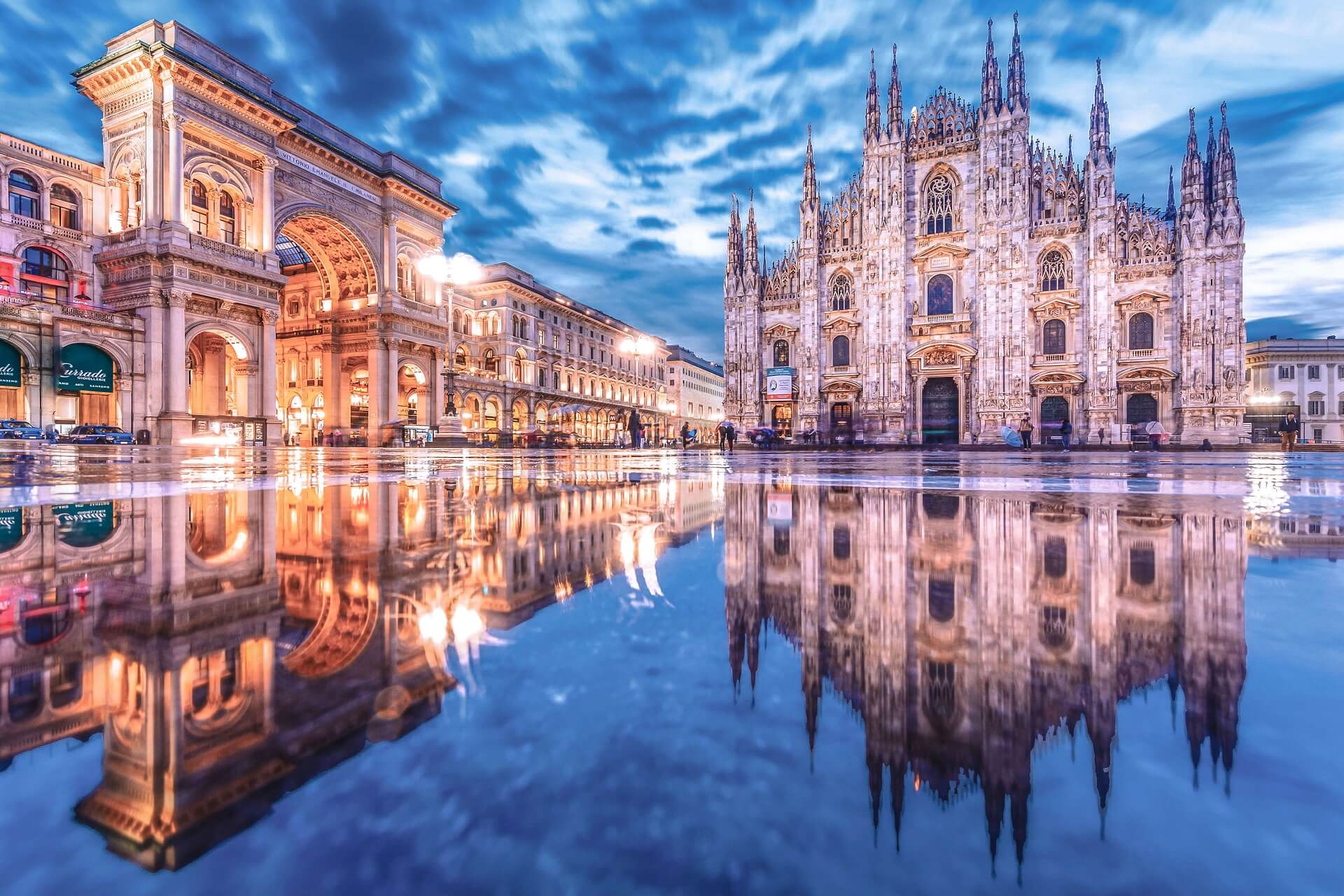
The Cathedral in Milan, Italy, also known as the Duomo di Milano, is a monument to architectural ingenuity and enduring splendor. This exquisite work of art is a blend of Gothic, Renaissance, and Neoclassical styles, and its awe-inspiring beauty captivates visitors.
The Milan Cathedral, whose construction dates back to the 14th century, has a long and storied past. Its magnificent facade, adorned with intricate sculptures and statues, functions as a museum in the open air, showcasing the artistic skill of renowned artists such as Leonardo da Vinci and Giuseppe Grandi.
Instantaneously upon entering, a sensation of tranquility and awe envelops you. The ethereal light that filters through the stained glass windows, which were designed by Valerio Vicentino and other masters, creates mesmerizing kaleidoscopic patterns on the floor and walls. The intricately corrugated vaults above create an ethereal atmosphere that transcends time.
The Cathedral’s majestic central nave, bordered with towering columns adorned with intricately carved motifs, is one of its most prominent features. As you travel along the nave, you cannot help but be awestruck by the colossal organ, whose melodies are renowned for resonating throughout the entire structure during religious ceremonies and concerts.
The rooftop of the cathedral offers an entirely distinct experience, with a breathtaking view of Milan’s skyline. As you ascend narrow staircases or a convenient elevator to the summit, you will be greeted by a forest of intricately crafted spires that appear to pierce the sky. The ornate flying buttresses offer both structural support and a photogenic backdrop.
In the midst of architectural marvels, the Madonnina, the Virgin Mary, is depicted in gold atop the main spire. As the symbol of Milan, it functions as a watchman over the city, representing faith and tenacity.
Visit the Archaeological Area, a hidden jewel beneath the cathedral, to immerse yourself in the Cathedral’s rich history. Here, you can explore ancient ruins from the early Christian era and observe the evolution of this holy site.
Cathedral in Milan, Italy, is an enduring treasure, a spiritual and artistic marvel that continues to captivate and inspire millions of visitors annually.
Hagia Sophia Grand Mosque in Istanbul, Turkey
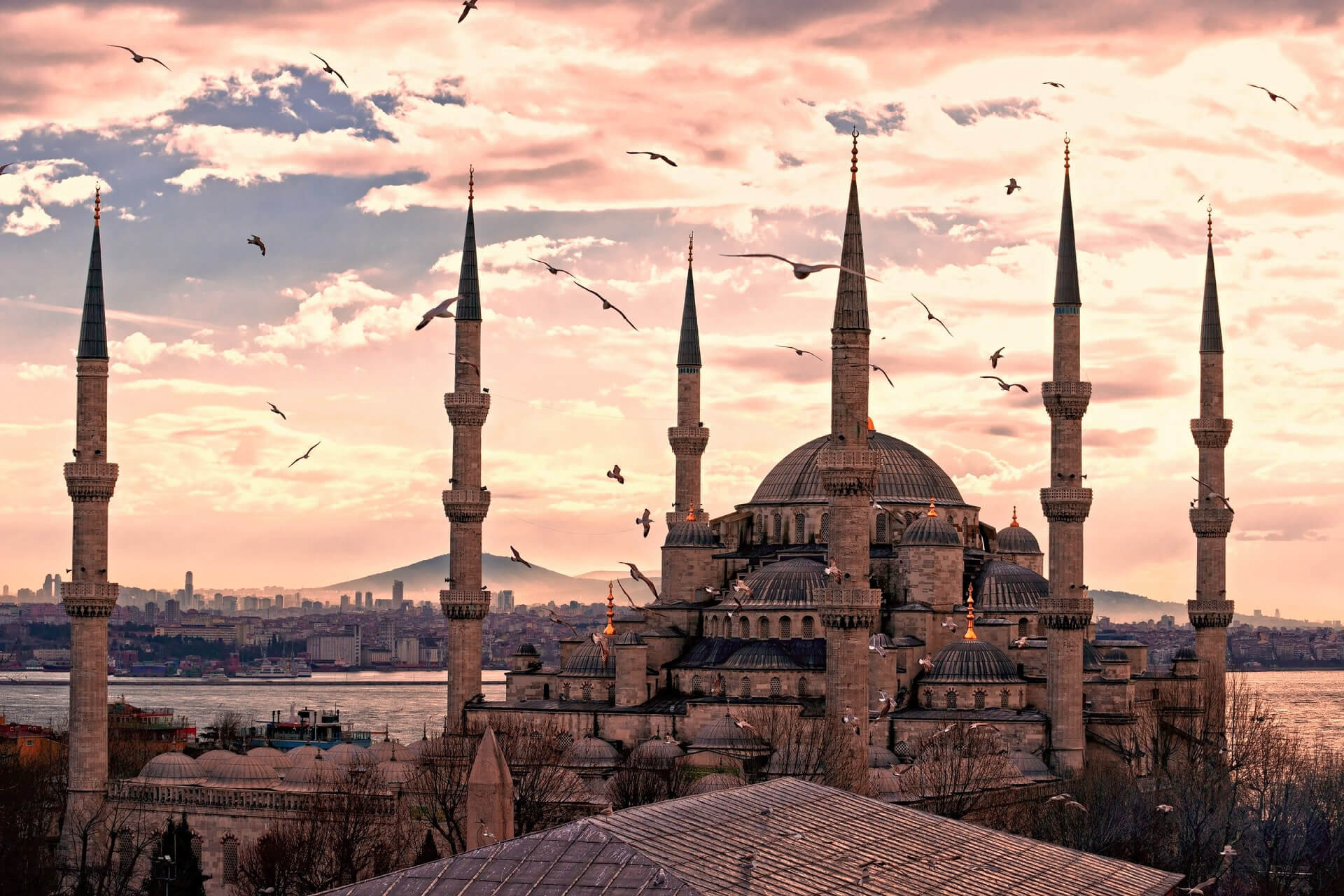
If there is one architectural marvel that exemplifies Istanbul, Turkey’s rich history and cultural fusion, it is without a doubt the Hagia Sophia Grand Mosque. This iconic structure stands majestically in the center of the city as a testament to the artistic ingenuity and engineering prowess of its time.
Once upon a time, in the sixth century, the Byzantine Emperor Justinian I commissioned the building of this magnificent Christian cathedral. Originally known as Hagia Sophia, which translates to “Holy Wisdom,” it was the religious center of Eastern Orthodoxy for nearly a thousand years.
In the 15th century, the winds of change blew over Istanbul as the city fell under the Ottoman Empire’s authority. In an extraordinary display of architectural appreciation, the Ottomans converted the cathedral into a mosque while preserving its Byzantine heritage. The name was changed to the Hagia Sophia Grand Mosque, signifying the fusion of two cultures within its confines.
Imagine walking through the expansive courtyard, flanked by exquisite minarets, as the mosque’s magnificent dome looms overhead. The walls are adorned with intricate calligraphy, and the magnificent mosaic medallions sparkle like gemstones in the natural light streaming through the stained glass windows.
When you enter, you will be greeted by the imposing central dome, which appears to defy gravity as it rests gracefully on massive pendentives. The interior, a veritable symphony of colors and patterns, will astound you.
Discover the mihrab, an ornate niche that points toward Mecca to indicate the direction of prayer, as you explore further. The minbar, the elevated pedestal from which sermons are delivered, is a wooden work of art.
Consider the numerous historical events that have transpired within these hallowed structures and allow yourself to be transported through time. The Hagia Sophia Grand Mosque has been a silent witness to everything from imperial coronations to the recitation of the Adhan, the Islamic call to prayer.
Take a leisurely meander through the courtyard’s manicured gardens, where a mesmerizing fountain stands as a symbol of ablution before prayer. The tranquil ambiance provides a tranquil escape from the bustling streets of Istanbul.
The Hagia Sophia Grand Mosque in Istanbul, Turkey, embodies cultural exchange and architectural brilliance. Its transformation from a Christian cathedral to a mosque reflects the city’s multifaceted history, and it remains a remarkable monument that attracts tourists from all over the globe.
Grand Place in Brussels, Belgium
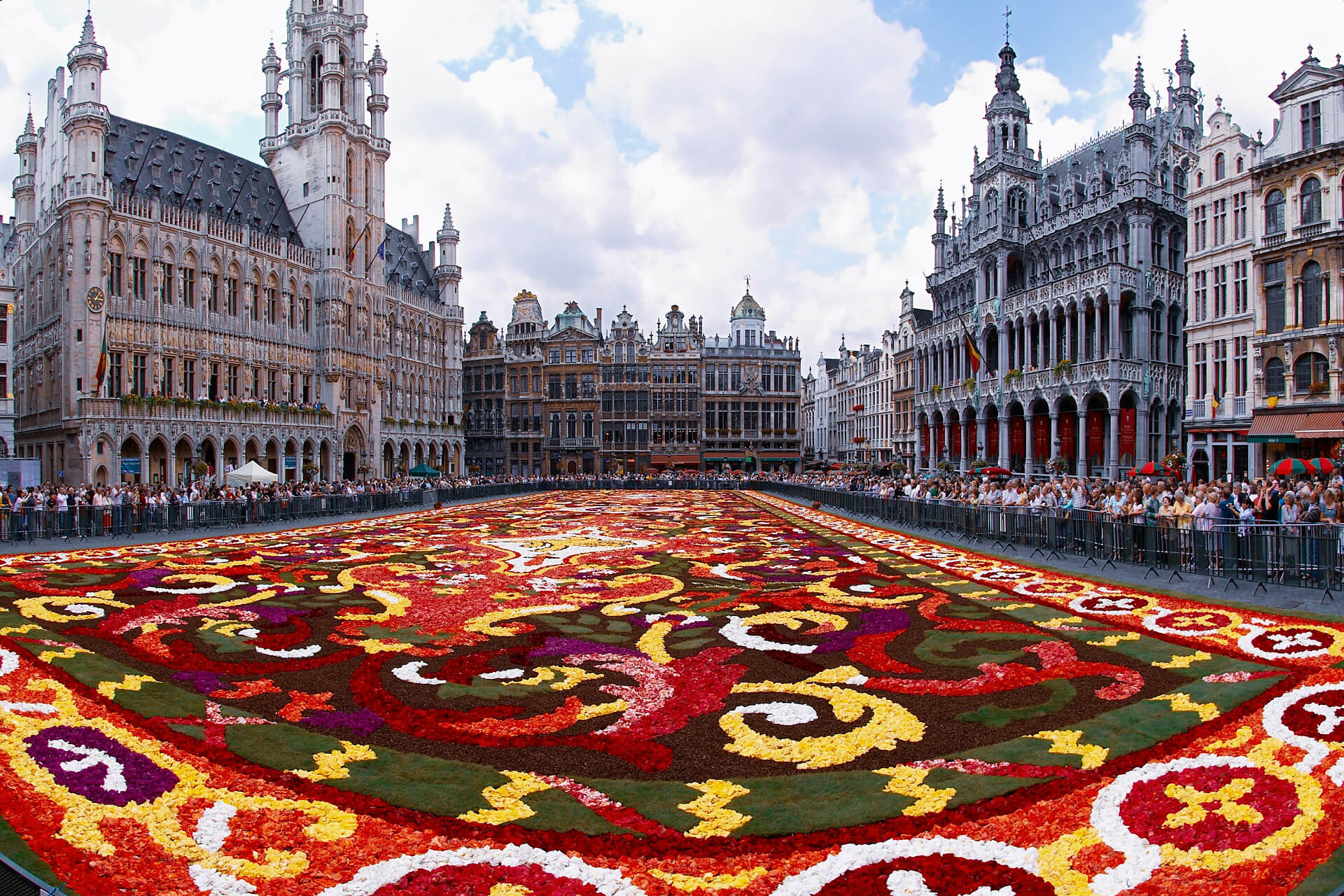
The Grand Place in Brussels, Belgium is a captivating square that exemplifies the country’s illustrious history and architectural splendor. This extraordinary plaza is comparable to entering a museum of art and culture that is alive and breathing. The Grand Place is unquestionably a must-visit destination for tourists and history buffs due to its breathtaking combination of opulent structures, rich history, and lively atmosphere.
The Grand Place in Brussels welcomes visitors with a magnificent visual feast. The square is surrounded by awe-inspiring buildings, each with a distinct architectural design spanning multiple centuries. This historical gem’s gothic spires, exquisite facades, and intricate detailing all contribute to its enchanting allure.
The Grand Place is steeped in history, having operated as a simple marketplace in the 10th century. Over the centuries, it evolved into a flourishing hub of trade and commerce, becoming a prominent commercial center. Numerous historical events, including celebrations, demonstrations, and even battles, have occurred on the square, making it an essential landmark in the history of Brussels.
The Town Hall stands tall and proud among the beautiful structures that adorn the Grand Place. With its tower and ornate statuary, this iconic structure, an exquisite example of Gothic architecture, dominates the square. It functions not only as the city’s administrative center, but also as a symbol of civic pride.
Another architectural marvel that adorns the Grand Place is the Maison du Roi, also known as the King’s House or Breadhouse. This building dates back to the 13th century and has been used for a variety of purposes, from housing nobles to serving as the administrative center of the town council. Today, it is home to the Museum of the City of Brussels, where visitors can learn more about the history of the city.
The Grand Place is also renowned for its biennial Flower Carpet event, which encompasses the entire square in a riot of color and fragrance. This floral tapestry, meticulously woven from thousands of begonias, features mesmerizing patterns and designs, enhancing the already picturesque setting.
In addition to its architectural beauty, the Grand Place is bustling with activity. The square is as lively today as it was centuries ago, with street performers entertaining passersby and locals and travelers mingling at the numerous cafes.
Grand Place in Brussels, Belgium is an architectural marvel, combining aesthetic brilliance with historical significance. As you stroll through this enchanting plaza, the splendor that surrounds you cannot help but captivate you.
Eiffel Tower in Paris, France

The Eiffel Tower, which stands tall and proud in the city of lights, is an architectural masterpiece that has long captivated the emotions of millions. This iconic structure, located in the center of Paris, France, is a symbol of love, romance, and grandeur.
The Eiffel Tower, which stands 324 meters tall, dominates the Parisian skyline and offers a magnificent panorama of the city below. It was originally built as the entrance gateway for the 1889 World’s Fair, which was held in Paris to commemorate the centennial of the French Revolution. The world had no idea that this transient structure would become one of the most recognizable landmarks on the planet.
The iron Eiffel Tower was an engineering achievement when it was constructed. It can withstand powerful winds and gracefully adapt to the changing seasons due to its lattice-like structure. At night, the tower illuminates with a mesmerizing display of twinkling lights, imbuing the city with a mystical aura.
As you ascend the tower, the intricate details of its construction will captivate you. The interlocking iron girders form sinuous arches and angles that appear to defy gravity, much like a complex puzzle. The tower’s engineering ingenuity continues to inspire architects and artists to this day.
Each of the Eiffel Tower’s three levels offers a distinct experience. On the first and second floors, there are immaculate restaurants and cafes where you can indulge in delectable French cuisine while admiring the view. The glass-floored observation deck on the first level provides a spine-tingling experience for thrill-seekers, giving the impression of floating above the metropolis.
The summit is a monument to human accomplishment and can be reached via an elevator or a strenuous ascent of stairs. Here, visitors can view Gustave Eiffel’s private residence, a small museum filled with mementos from the early days of the tower. The view from the summit is unrivaled, making it a must-see destination for every traveler.
The Eiffel Tower has witnessed innumerable proposals, declarations of love, and joyful celebrations throughout its illustrious history. It has survived wars and adversity, remaining a symbol of optimism and unity for the people of France and the world.
The Eiffel Tower in Paris, France, is a structure that defies time and continues to inspire awe as a testament to human ingenuity. The Eiffel Tower’s appeal is universal, regardless of whether you are an architecture enthusiast, a hopeless romantic, or an inquisitive explorer.
Notre-Dame in Paris, France
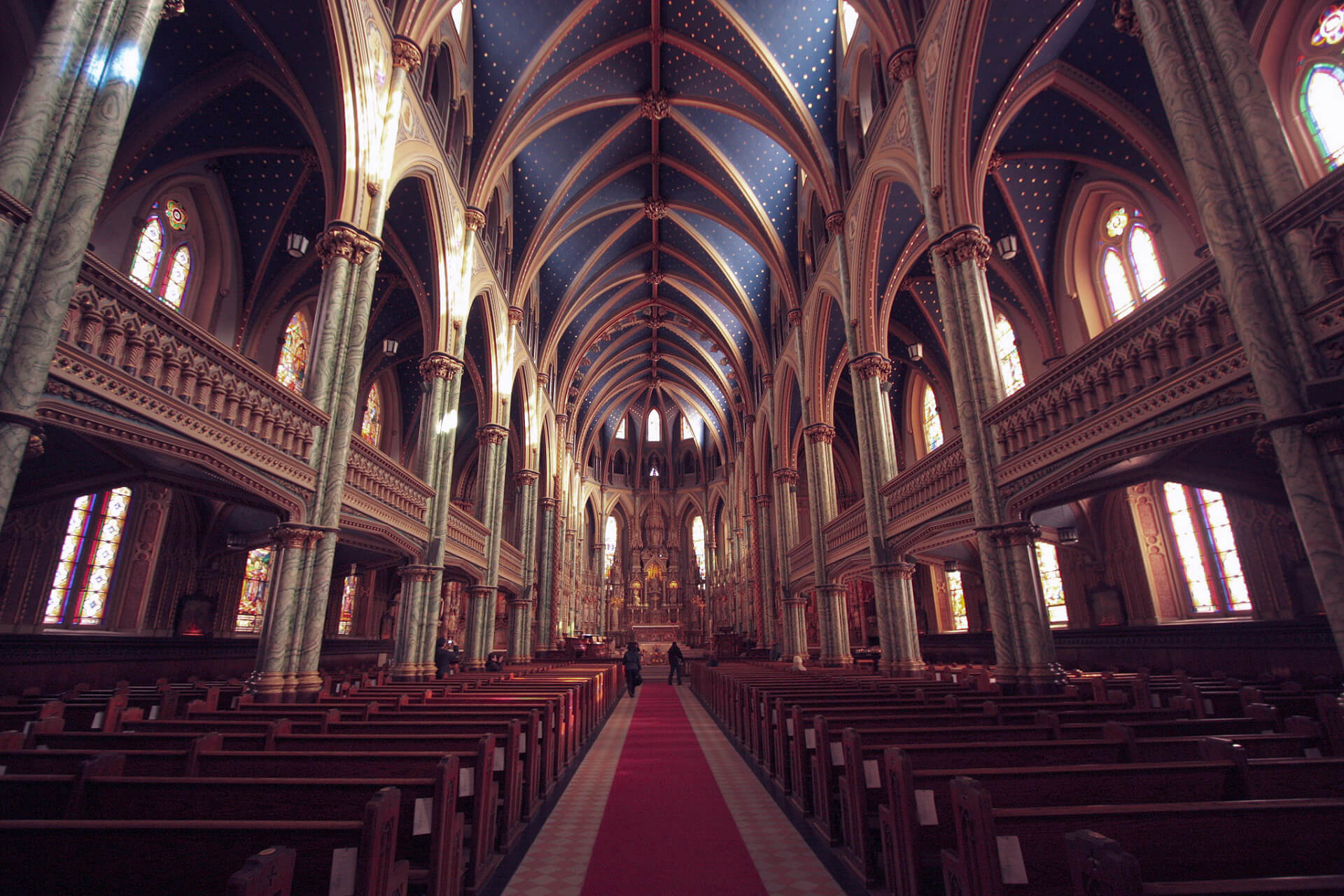
Notre-Dame, located in the center of Paris, is an architectural masterpiece that attracts millions of visitors annually. This magnificent Gothic cathedral stands as a symbol of France’s rich history, awe-inspiring visitors with its breathtaking architecture and intricate details.
The construction of Notre-Dame began in 1163 and was completed nearly two centuries later. Its imposing façade, which is adorned with sculptures of biblical figures and saints, recounts tales of a bygone era. The flying buttresses and rose windows add to the magnificence of the cathedral, reflecting the skill and devotion of the artisans who constructed this magnificent structure.
Visitors are surrounded by an atmosphere of reverence and tranquility upon entering. With vaulted ceilings that appear to embrace the sky, the nave reaches toward the heavens. Spectacularly colored stained glass windows filter ethereal light into the interior, illuminating the stone floors with a mesmerizing ballet of hues.
As you explore the transept and choir, gargoyles and chimeras perched on the walls will appear to protect the sacred area. These intriguing grotesques not only serve as decorative elements, but also as waterspouts to direct rainwater away from the building, demonstrating the practical ingenuity of the medieval architects.
Notre-Dame is undeniably a marvel of architecture, but it has also witnessed important historical events. The 1804 coronation of Napoleon Bonaparte as Emperor of France was one such event that etched its position in history into the cathedral’s walls.
In 2019, a fire enveloped the roof and spire of Notre-Dame Cathedral, which was a tragic event. The world mourned as the flames threatened to extinguish this treasured cultural artifact. Nonetheless, restoration specialists and the international community collaborated to restore the cathedral to its former splendor.
Today, Notre-Dame once again stands tall, enticing visitors from around the globe to marvel at its splendor. The cathedral remains an essential pilgrimage destination for believers, history buffs, and art and architecture devotees.
The experience of visiting Notre-Dame transcends time, providing a glimpse of the past while embracing the present. Whether exploring the crypt or ascending the spires for a panoramic view of Paris, the aura of grandeur and spirituality leaves an indelible mark.
Notre-Dame Cathedral in Paris, France, is a testimony to human ingenuity, devotion, and tenacity. It continues to stand tall, awe-inspiring future generations with its beauty and significance, eternally woven into the fabric of history.
Acropolis in Athens, Greece
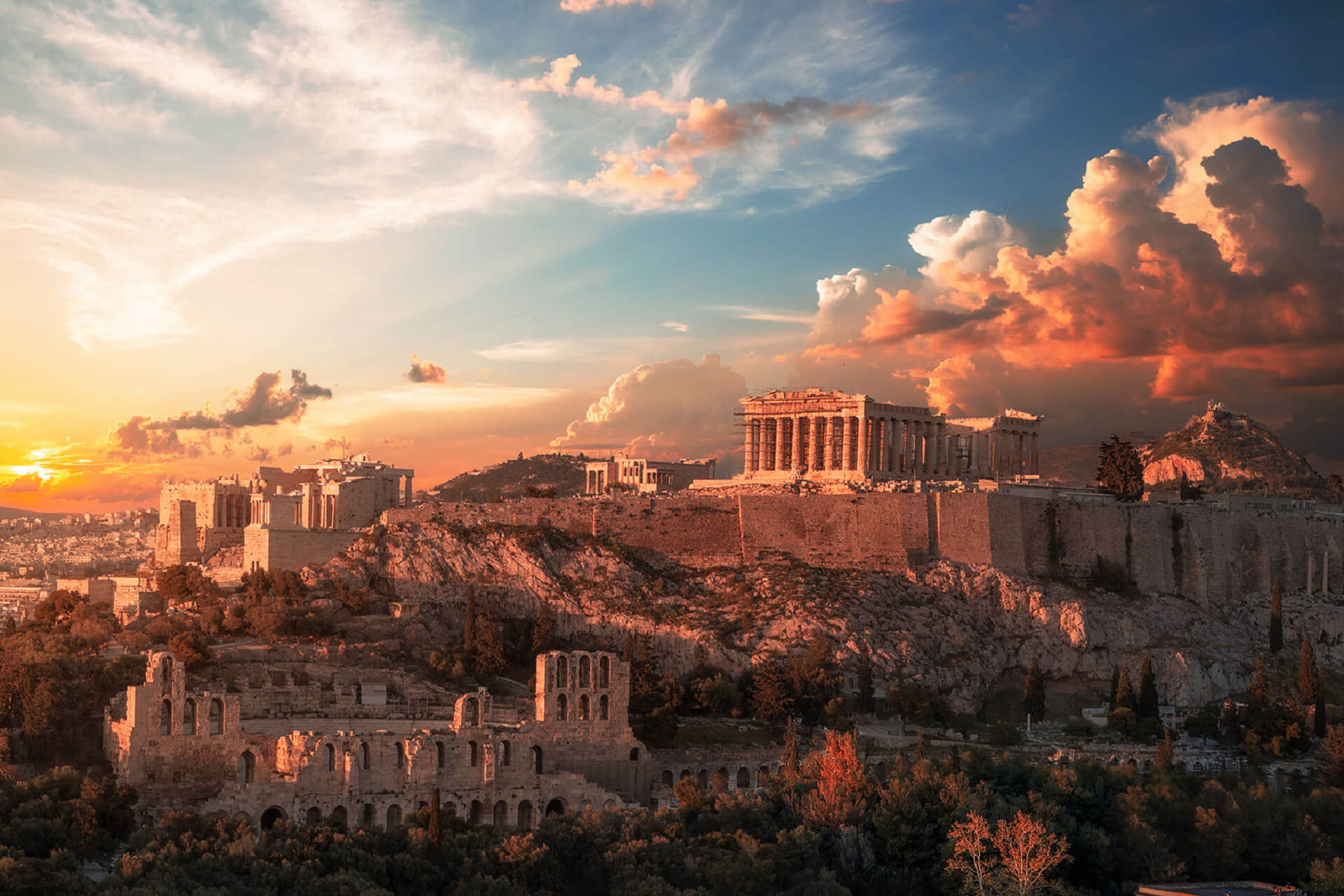
The Acropolis in Athens, Greece, is awe-inspiring evidence of the ingenuity and magnificence of the ancient world. This iconic citadel, perched atop a rocky hill, has withstood the passage of time, preserving its historical significance and enthralling visitors from around the world.
The Parthenon, a Doric masterpiece dedicated to the goddess Athena, the patron goddess of Athens, crowns the Acropolis, which is a formidable architectural marvel. Its construction began in 447 BCE and was the result of foresightful leadership and expert craftsmanship.
The Acropolis is replete with structures that captivate architecture enthusiasts. The Propylaea, a monumental gateway, presents an imposing presence to visitors. The elegant Erechtheion temple features intricate carvings and the iconic Porch of the Caryatids, which consists of six gracefully sculpted female figures serving as supporting columns.
From the Acropolis, one can enjoy panoramic views of Athens, where the modern metropolis and ancient ruins seamlessly coexist. The Odeon of Herodes Atticus, a magnificent stone theater, is nestled in the bosom of the hill and serves as a cultural link to the past.
The Acropolis preservation efforts are commendable. The majesty of these historical structures has been preserved through painstaking restoration efforts, ensuring that they will endure for generations to come. Despite the effects of time, the buildings continue to stand erect, telling tales of bygone eras.
The Acropolis represents Athena, the goddess of wisdom and conflict. As you explore the ruins, it is as if her aura persists, whispering ancient wisdom to those who are willing to listen.
When the sun sets below the horizon, the Acropolis transforms into a light and auditory spectacle. Illuminated against the night sky, the monuments appear ethereal, eliciting an indescribable feeling of transcendence.
The ancient grounds of the Acropolis are comparable to strolling through the halls of history. Each stone contains secrets and tales that are awaiting the discovery of inquisitive modern visitors.
The Acropolis in Athens, Greece, is a symbol of human creativity and a testament to the peak of ancient civilization. Its majesty and historical significance make it a place of unparalleled awe and reflection. If you ever find yourself in Athens, don’t neglect the opportunity to immerse yourself in this enthralling story of ancient grandeur.
Colosseum in Rome, Italy
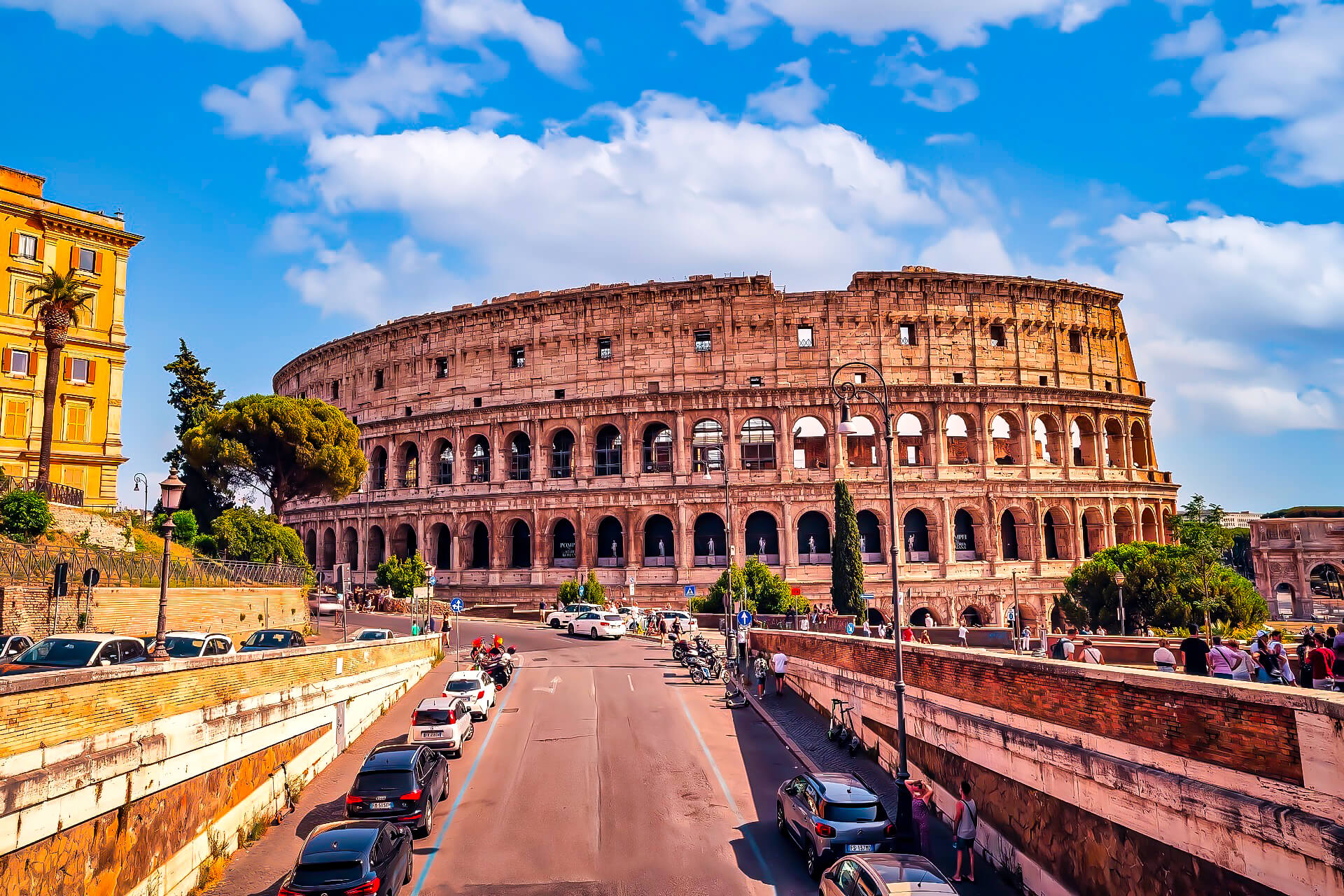
The awe-inspiring Colosseum stands in the center of Rome, Italy; it is a monumental engineering achievement and a timeless example of ancient Roman architecture. This famous amphitheater, also known as the Flavian Amphitheatre, is a captivating combination of magnificence, history, and culture.
Emperor Vespasian of the Flavian dynasty commissioned the construction of the Colosseum in 70 A.D., and it was completed during the reign of his successor, Emperor Titus, in 80 A.D. This amphitheater was utilized predominantly for gladiator contests, public spectacles, and dramatic performances. Its elliptical shape and inventive tiered seating arrangement allowed it to accommodate up to 80,000 spectators, making it one of the ancient world’s largest amphitheaters.
Stepping into the Colosseum is tantamount to stepping back in time, as the echoes of the once-enthralled crowds’ cheers and jeers can still be heard. The exterior facade of the amphitheater, which is adorned with colossal columns of various architectural styles, is a sight to witness. As the sun sets over Rome, the ancient stones of the Colosseum acquire a warm, golden hue, enhancing its enchantment.
The Colosseum is a masterpiece of Roman engineering. The arena floor, known as the “harena,” was a marvel of mechanical ingenuity, with a complex system of trapdoors and elevators used to create exhilarating special effects during the performances. Underneath the arena was a network of subterranean passageways known as the “hypogeum,” where gladiators, animals, and props were concealed prior to their dramatic entrance onstage.
Popularity of the Colosseum was not without controversy, as it has been criticized for its brutal gladiatorial combats and the tragic fate of innumerable humans and animals. Despite this gloomy chapter in its past, the Colosseum serves as a poignant reminder of the harsh realities of antiquity.
The Colosseum is a UNESCO World Heritage Site and one of the most popular tourist attractions in the world. Its sheer grandeur and historical significance attract millions of visitors and history buffs from around the world. Visitors can almost feel the electric energy that pulsed through the amphitheater during its prime as they traverse its ancient arches.
One cannot help but venerate the Roman craftsmanship and artistry that has withstood the test of time when standing among the imposing ruins. Not only has the Colosseum become an architectural inspiration for many, but it has also become a symbol of Rome’s enduring legacy.
The Colosseum in Rome, Italy is an architectural marvel that embodies the grandeur of ancient Rome. It is a must-visit destination for anyone interested in experiencing the allure of classical antiquity due to its breathtaking grandeur and rich history.
Tower Bridge in London, United Kingdom
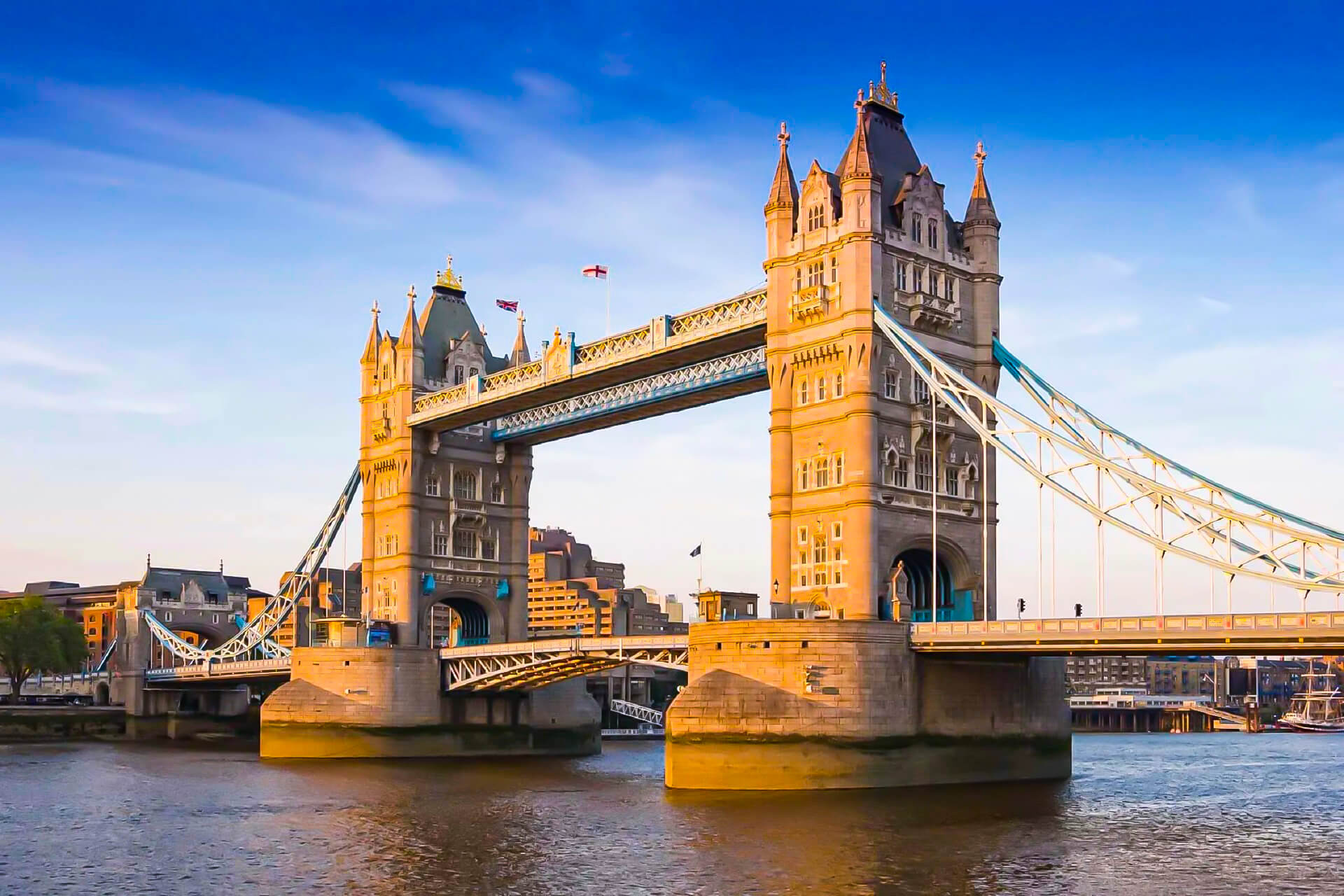
Tower Bridge is unquestionably one of the United Kingdom’s most recognizable landmarks. This architectural marvel, which towers majestically over the River Thames, has won the hearts of locals and visitors equally. It represents London’s illustrious history and engineering prowess.
Tower Bridge was built in the late 19th century in response to the growing demand for a bridge that enabled pedestrian and vehicular traffic while maintaining access to London’s port. Reputable architects Sir Horace Jones and Sir John Wolfe Barry collaborated on the bridge’s design, which is a synthesis of the Victorian Gothic and Romanesque styles.
The primary characteristic of the bridge is its central bascule, a French word meaning “see-saw.” This movable span permits the passage of large vessels, an extraordinary feat of engineering for the busy Thames. The name of the bridge is derived from the two imposing structures that flank the two bascules. Two elevated walkways connect these skyscrapers, providing pedestrians with an exhilarating experience as they cross the river.
When Tower Bridge was completed in 1894, it was a revolutionary engineering achievement. Powered by a revolutionary hydraulic system, the bascules were both impressive and efficient. The stunning architecture and functional design of the bridge make it a genuine work of art.
Nighttime illumination transforms Tower Bridge into a mesmerizing spectacle. Spectators are in awe of the Thames River’s majesty as a result of the interplay between light and shadow.
Tower Bridge has become an integral element of London’s cultural fabric over time. It has appeared in numerous films, novels, and artworks, elevating its status to that of a global symbol for London and the United Kingdom.
For visitors, investigating Tower Bridge is a fascinating journey through time and technological innovation. The Tower Bridge Exhibition enables visitors to delve into the bridge’s history and even experience the glass-floor walkway, which provides a breathtaking view of the river below.
Tower Bridge is an extraordinary representation of London’s rich history and innovative spirit. Its combination of architectural brilliance and engineering excellence has garnered it a place as one of the United Kingdom’s most beloved landmarks.
Sagrada Família in Barcelona, Spain
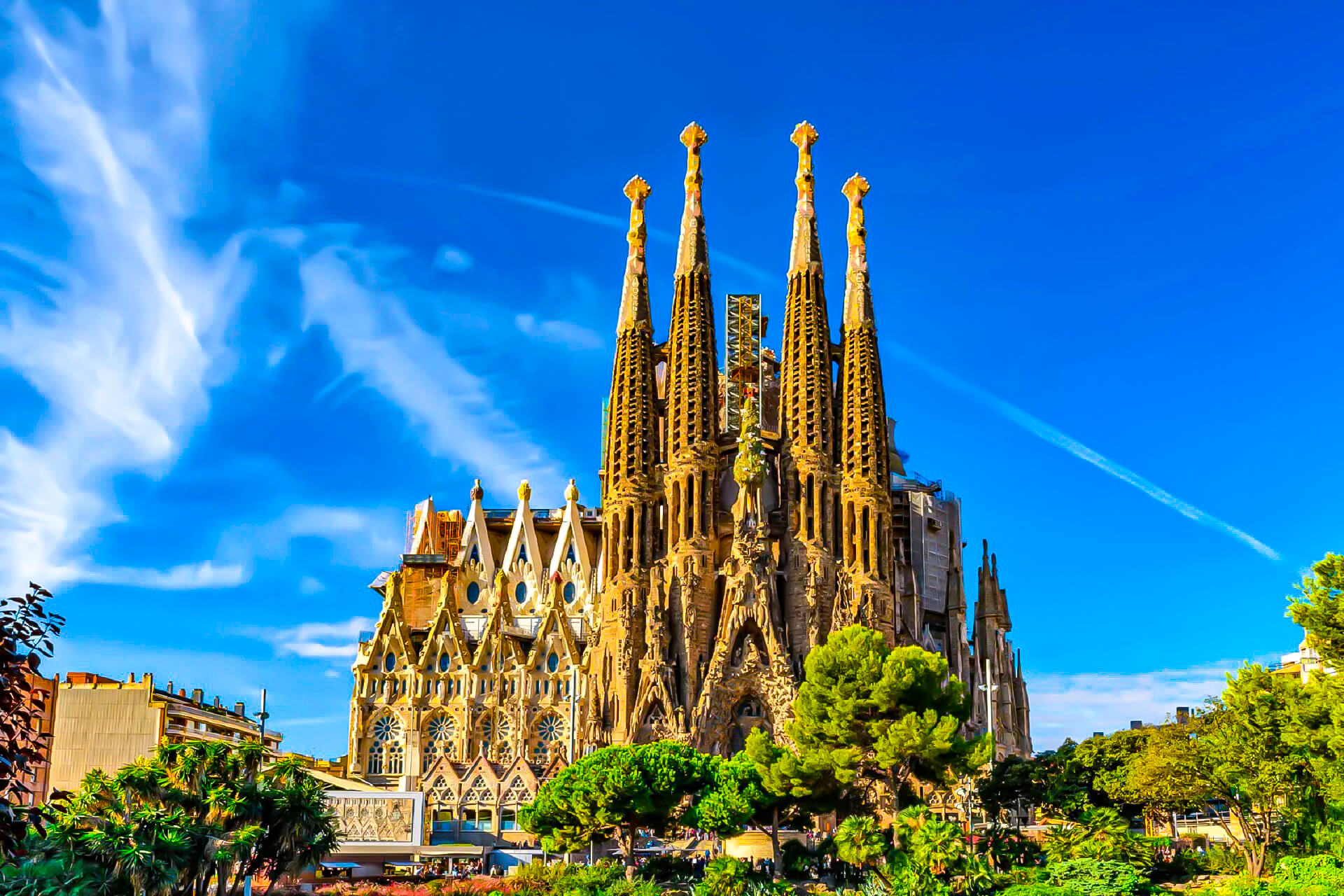
The Sagrada Famlia, an architectural masterpiece that captivates millions of tourists each year, rests at the heart of Barcelona, a city renowned for its artistic charm. This magnificent basilica, designed by the genius architect Antoni Gaud, is an enduring amalgamation of Gothic and Art Nouveau styles that creates a breathtaking sight.
As one approaches the Sagrada Famlia, one cannot help but be awed by its overwhelming splendor. The elaborate façade welcomes you with intricate sculptures adorned with religious symbols and narratives. The basilica’s towering spires add to its splendor, standing tall and defiant against the clear blue sky.
You will find yourself immersed in a heavenly atmosphere upon entering. The nave is a vast expanse of heavenly beauty, with colorful stained-glass windows illuminating the interior. In every nook and cranny, Gaud’s mastery of geometry is evident, as the hyperboloid vaults seem to touch the ineffable.
However, the Sagrada Famlia is distinguished by its unique construction. Despite the fact that the foundation stone was set in 1882, the basilica is still under construction more than a century later. This ambitious endeavor has garnered a great deal of attention and admiration, making it an enduring symbol of fortitude and tenacity in the face of time.
Gaud’s vision for the Sagrada Famlia defies conventional architectural conventions. His use of natural elements such as hyperboloids, paraboloids, and helical structures demonstrates his profound respect for the inherent majesty of nature. Every element serves a purpose, as if each stone were an essential piece of a divine puzzle.
Visitors are able to investigate the passion facade and the glory facade, each of which has distinct characteristics that tell the story of Christ’s life and the essence of human existence. The sculptures’ craftsmanship is nothing short of extraordinary, as they exhibit an aesthetic sensibility that profoundly stirs the spirit.
The Sagrada Famlia is not just a marvel of architecture; it is also a symbol of faith and unity. It embodies the cosmopolitan spirit of Barcelona, drawing together people of all backgrounds and beliefs to appreciate its beauty and significance.
The enduring masterpiece of Sagrada Famlia in Barcelona, Spain, is a testament to human ingenuity and devotion. Its mysterious appeal attracts visitors from around the globe, who are awestruck by its magnificence. As construction continues, the basilica serves as a reminder that great art flourishes over time, leaving an indelible impact on those who are fortunate enough to experience it.
Stonehenge in Wiltshire, United Kingdom
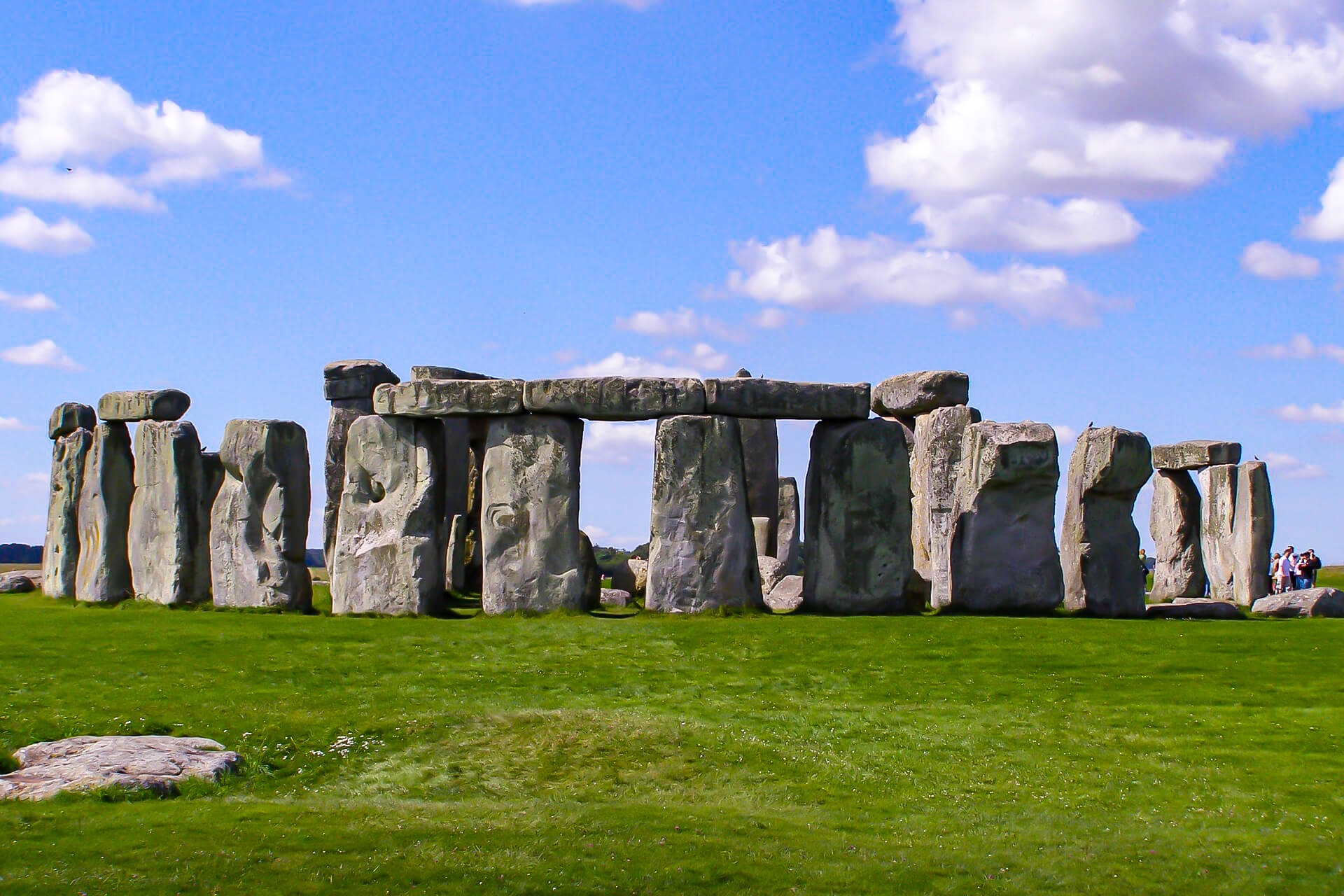
Stonehenge, a mysterious and awe-inspiring structure, stands triumphantly in Wiltshire, United Kingdom’s picturesque landscape. This ancient work of art continues to confound archaeologists and historians, leaving us to ponder its significance.
Stonehenge is a megalithic structure comprised of enormous stones arranged in a circle. The monument is believed to have been constructed around 3000 BCE during the Neolithic period, making it over 5,000 years old. It remains an engineering marvel and a testament to its creators’ ingenuity.
The centerpiece of this archaeological marvel is a ring of sarsen stones, some as tall as 30 feet and topped by lintels, that appears to contradict the passage of time. It is believed that these monoliths were transported from quarries located over 30 kilometers distant, a feat that modern engineering would find difficult. Scholars continue to debate how these stones were transported using various hypotheses.
Stonehenge’s allure is not only due to its scale, but also to its celestial alignment. During the summer solstice, the sun rises directly above the Heel Stone, illuminating the monument’s center. Such celestial alignments have prompted numerous hypotheses regarding the religious and astronomical significance of the site.
When you visit Stonehenge, you are transported to the distant past, where you cannot help but gaze at the ingenuity of the ancient architects and builders. You will encounter enigmatic circular ditches known as Aubrey Holes, which are believed to be ceremonial in nature, as you traverse the site. These subtle yet significant characteristics contribute to the site’s aura of mystery.
In spite of extensive research, the true purpose of Stonehenge remains obscure. Was it a prehistoric astronomical observatory, a site of worship, or a cemetery for revered leaders? Perhaps it served multiple purposes, but its secrets were destined to be lost to time.
Efforts have been made in recent years to preserve and protect this UNESCO World Heritage Site. Visitors can now view the stones from a distance and investigate the nearby Visitor Center, which features an exhibition of artifacts discovered at the site.
Stonehenge in Wiltshire, United Kingdom, is a timeless mystery that attracts inquisitive travelers from around the world. Its majesty, celestial alignments, and historical anomalies continue to inspire and fascinate, solidifying its position as one of the world’s most captivating archaeological marvels.
Canal Belt in Amsterdam, Netherlands

Amsterdam, the Netherlands’ picturesque metropolis, is renowned for its captivating Canal Belt. This UNESCO World Heritage site features an enchanting network of canals that wind through the center of the city, providing an unrivaled view of its rich history and architectural marvels.
During the Dutch Golden Age in the 17th century, the Canal Belt was conceived as a singular urban planning masterpiece. It was conceived as a practical solution to accommodate the city’s rapid growth while concurrently demonstrating the nation’s economic prowess. The semicircular configuration of the canal, also known as the “Grachtengordel,” enabled efficient transportation and water management, defining Amsterdam as a city defined by its symbiotic relationship with the water.
The canals enable visitors to immerse themselves in the unique atmosphere of Amsterdam. Each canal exudes its own unique allure, surrounded by a breathtaking collection of historic townhouses, quaint bridges, and picturesque waterfront cafes. The tall, narrow facades of the houses are a testimony to the city’s history of maximizing limited space, a trait uncommon in many other European cities.
Along the Canal Belt, you will encounter a delightful assortment of cultural monuments and hidden treasures. Take a moment to appreciate the remarkable architecture of the 17th-century Westerkerk, a stunning Dutch Renaissance church that once inspired the legendary artist Rembrandt. You will find a variety of art galleries, boutique stores, and cozy pubs in the vibrant Jordaan district, which reflects Amsterdam’s progressive and bohemian spirit.
Consider embarking on a canal cruise in the early evening to observe the sparkling lights that dance upon the water, transforming the city into an enchanting wonderland. As you sail through the tranquil canals, the experience transforms into a poetic voyage through time, illuminating the glorious past of Amsterdam’s Golden Age.
The Canal Belt stages a variety of lively events and celebrations throughout the year. From the ebullient King’s Day celebration to the flamboyant Amsterdam Pride Parade, the canals become the city’s veins, pulsating with life and unbridled zeal.
To truly comprehend the essence of Amsterdam, one must take a leisurely stroll or bike ride along the Canal Belt. It is a chance to become acquainted with the essence of the city and its hospitable citizens, as well as an opportunity to observe the daily rituals that characterize life in this European jewel.
The canal belt of Amsterdam is a symphony of architecture, history, and culture mixed with the city’s dazzling waters.

